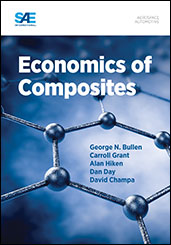Journal Article
Application of Synthetic Jets to Enhance the Performance of a Vertical Tail
2013-09-17
2013-01-2284
The performance enhancement of a vertical tail provided by aerodynamic flow control could allow for the size of the tail to be reduced while maintaining similar control authority. Decreasing tail size would create a reduction in weight, drag, and fuel costs of the airplane. The application of synthetic jet actuators on improving the performance of the vertical tail was investigated by conducting experiments on 1/9th and 1/19th scale wind tunnel models (relative to a Boeing 767 tail) at Reynolds numbers of 700,000 and 350,000, respectively. Finite-span synthetic jets were placed slightly upstream of the rudder hinge-line in an attempt to reduce or even eliminate the flow separation that commences over the rudder when it was deflected to high angles. Global force measurements on the 1/9th scale model showed that the flow control is capable of increasing side force by a maximum of 0.11 (19%). The momentum coefficient that created this change was relatively small (Cμ = 0.124%).

